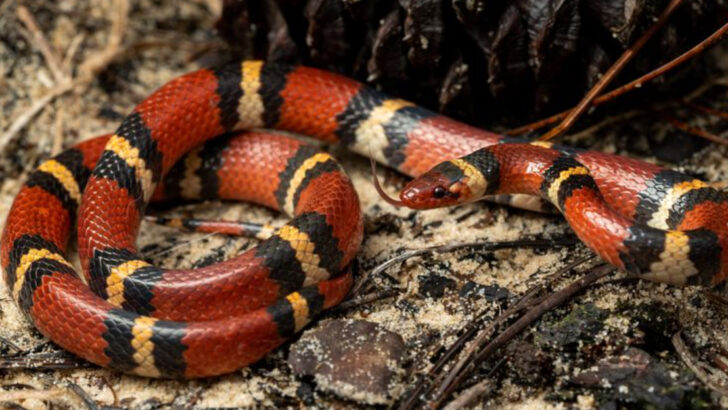The East Coast isn’t just home to charming towns and sandy shores—it’s also crawling with snakes you won’t find anywhere else.
From shadowy forests to sunbaked swamps, these slithering specialists have made their mark, adapting to their habitats with impressive skill. Some blend so well with fallen leaves that you could walk right past them. Others coil up on tree branches, silently watching the world below.
Not all of them are dangerous, but a few demand respect. A single wrong step in the wrong place, and you might meet a snake that doesn’t appreciate the company.
Whether you’re a reptile enthusiast or someone who’d rather admire from a safe distance, these East Coast exclusives are worth knowing. Let’s dive into the 15 snakes that call this side of the country home—and nowhere else.
Eastern Coral Snake
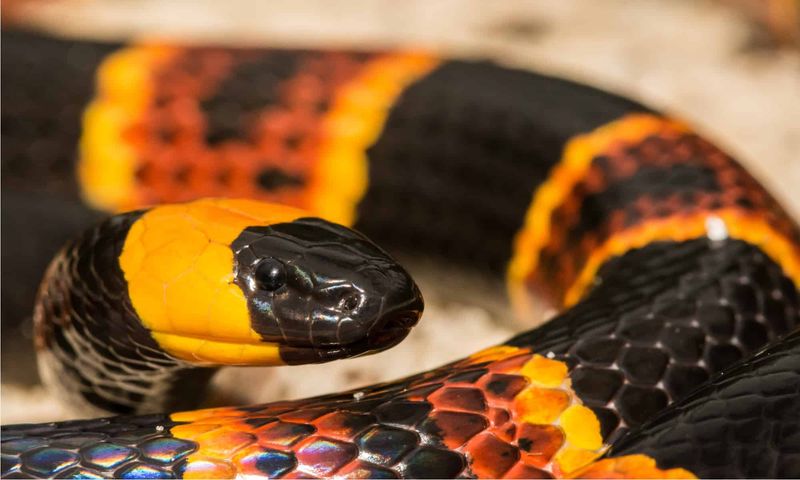
The Eastern Coral Snake, known for its striking color pattern of red, yellow, and black bands, resides primarily in the southeastern United States. This elusive serpent often inhabits coastal pine forests and wooded areas where it can remain hidden under leaf litter and fallen logs.
Though venomous, the Eastern Coral Snake is shy and prefers to avoid human contact, making encounters with it rare. Its diet consists mainly of other snakes, which it subdues with its potent neurotoxic venom.
Conservation efforts are crucial to preserve its diminishing habitat due to urbanization and deforestation.
Eastern Kingsnake
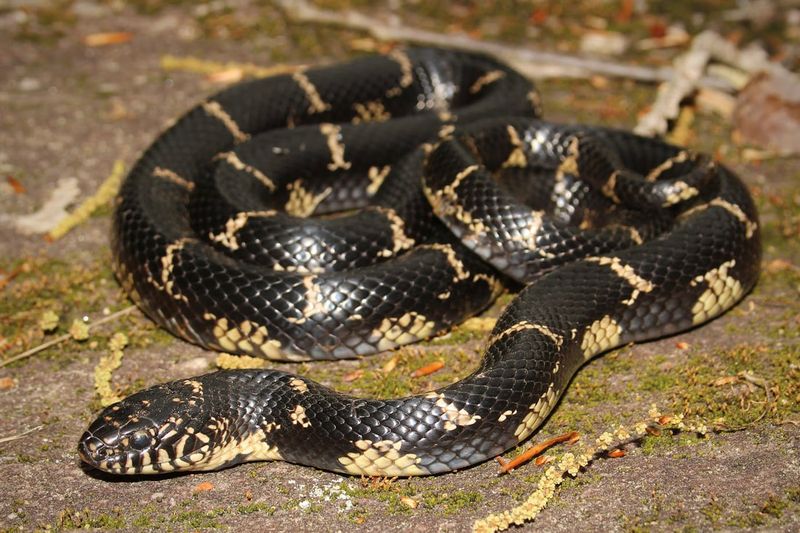
The Eastern Kingsnake is admired for its resilience and beauty, characterized by glossy black scales adorned with white chain-like bands. Found in diverse habitats, including forests and swamps, this snake is a versatile predator.
Its diet is varied, preying on rodents, birds, and even other snakes, including venomous species like copperheads. This ability has earned it the nickname “King.”
Eastern Kingsnakes are non-venomous and harmless to humans, contributing positively to the ecosystem by controlling pest populations. Their adaptability makes them a symbol of survival in changing environments.
Northern Water Snake
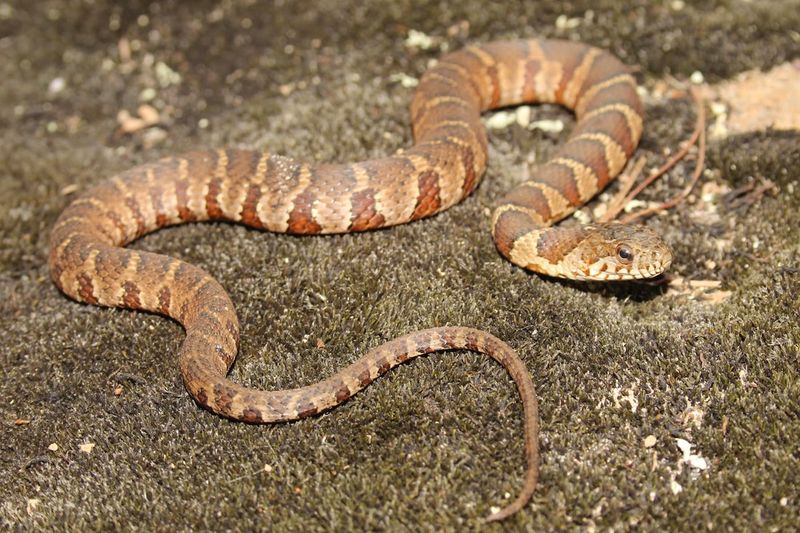
Northern Water Snakes are robust serpents that thrive in aquatic environments across the East Coast. With their thick bodies and varying shades of brown and gray, they blend seamlessly into their watery habitats.
These snakes are often seen basking on rocks or swimming gracefully in streams and ponds. They primarily feed on fish and amphibians, making them integral to aquatic ecosystems.
While often mistaken for venomous cottonmouths, Northern Water Snakes are non-venomous and play a vital role in controlling fish populations, maintaining ecological balance.
Eastern Rat Snake
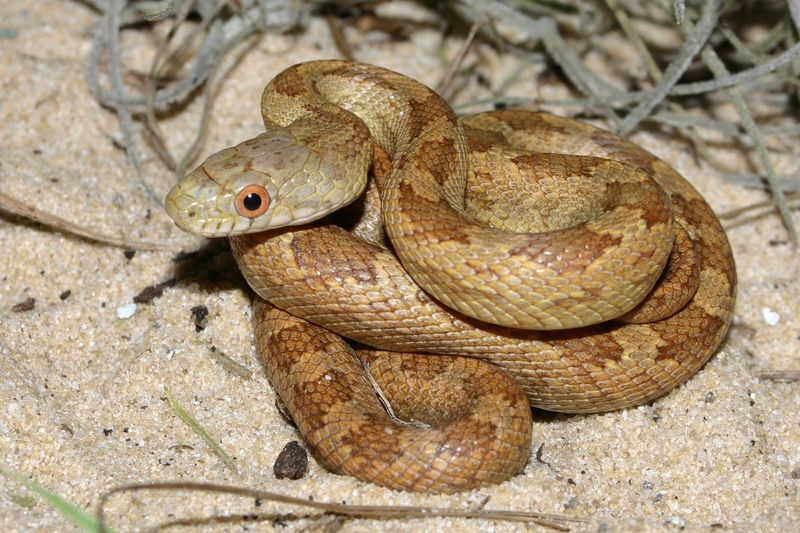
The Eastern Rat Snake, with its sleek black body, is an expert climber found in forests and fields along the East Coast. Its ability to ascend trees in search of birds and eggs is remarkable, showcasing its adaptability.
These non-venomous snakes are beneficial to humans, as they help control rodent populations. Despite their size, often exceeding six feet, they are docile and pose no threat to people.
Conservation efforts aim to protect their habitats from deforestation, ensuring these snakes continue to thrive and contribute to their natural environments.
Eastern Hognose Snake
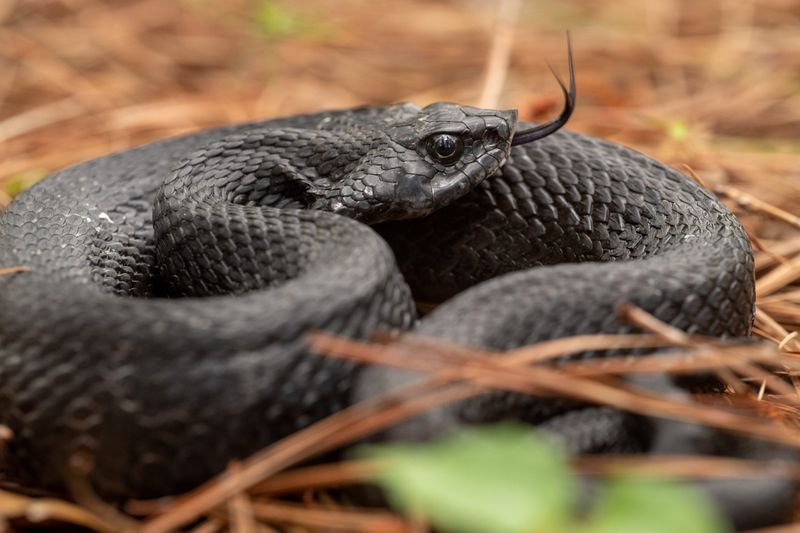
Known for its theatrical defensive behavior, the Eastern Hognose Snake is a fascinating species with a unique upturned snout. It inhabits sandy areas and open woodlands where it can burrow and search for amphibians.
When threatened, it may feign death or flatten its neck to resemble a cobra, deterring potential predators. This harmless snake is often wrongly feared due to its defensive antics, but it poses no danger to humans.
Protecting its natural habitats is vital to prevent this intriguing snake from becoming a casualty of habitat loss.
Scarlet Kingsnake
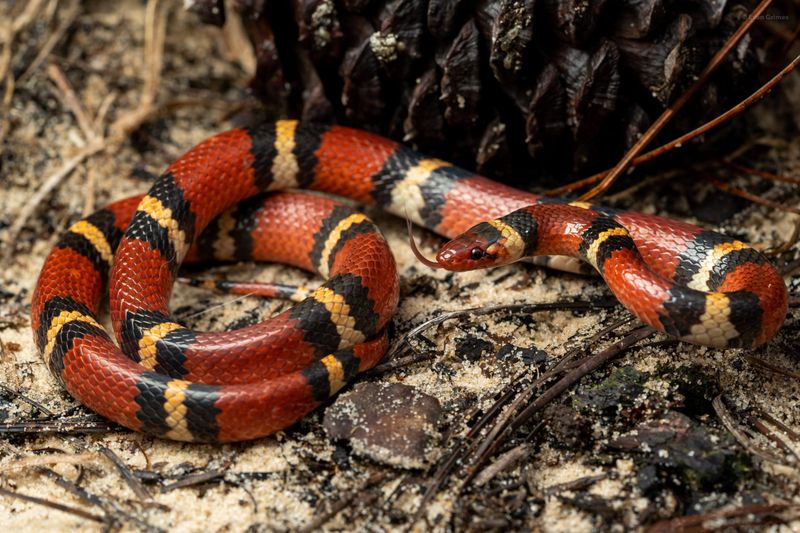
The Scarlet Kingsnake, with its vibrant red, black, and yellow bands, mimics the venomous coral snake, a tactic that deters predators. It frequents deciduous forests and areas with abundant ground cover.
Non-venomous and small, these snakes feed on lizards, rodents, and other small snakes. Their mimicry is a fascinating example of evolutionary adaptation to avoid predation.
Scarlet Kingsnakes play a crucial role in their ecosystems by controlling pest populations, and conservation efforts are essential to maintain their habitats and ensure their survival.
Copperhead Snake
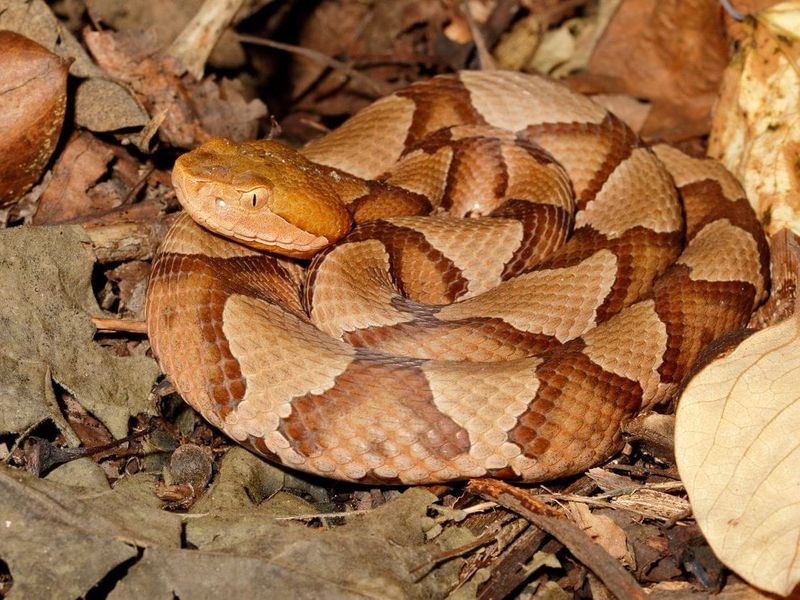
Copperhead Snakes are known for their distinctive copper-colored heads and hourglass body patterns. Found in deciduous forests and rocky areas, they blend seamlessly into their surroundings.
These snakes feed on small mammals and birds, using their venom to subdue prey. Though bites can be painful, they are rarely fatal to humans. Copperheads are vital to maintaining ecological balance by controlling pest populations.
Awareness and education are key to minimizing human-snake conflicts, ensuring these snakes continue to thrive in their natural habitats.
Eastern Diamondback Rattlesnake
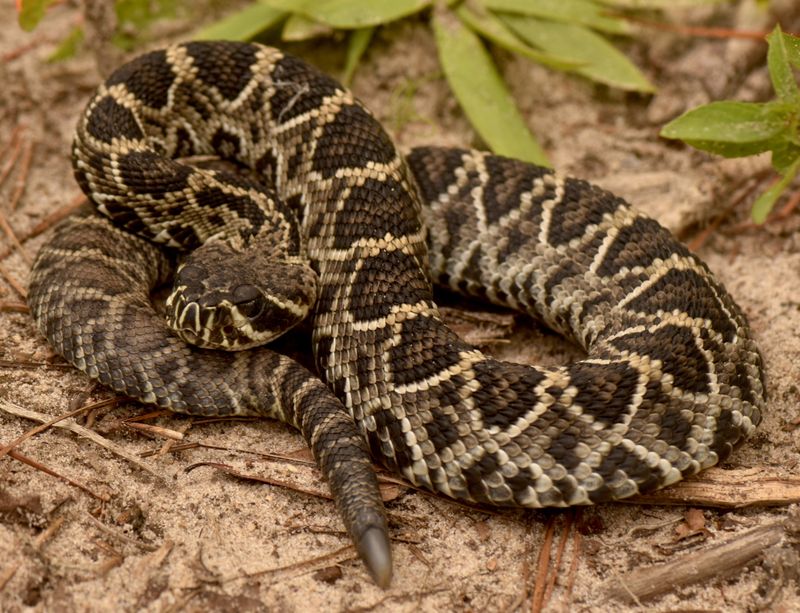
The Eastern Diamondback Rattlesnake is the largest rattlesnake species, known for its striking diamond pattern and distinctive rattle. It inhabits coastal scrublands and pine forests where it can hunt for rodents and rabbits.
Despite their formidable appearance, these snakes are shy and avoid confrontation, using their rattle as a warning. Their venom is potent but primarily used for hunting rather than defense.
Protecting these rattlesnakes involves conserving their habitats, as human encroachment poses significant threats to their populations.
Pine Snake
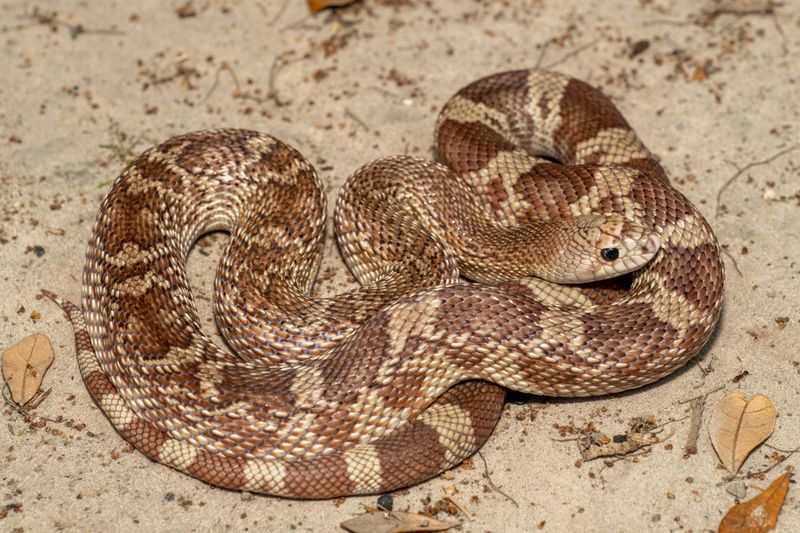
Pine Snakes are large, powerful constrictors that inhabit the sandy pine forests of the East Coast. Their ability to burrow and hunt underground distinguishes them from other snakes.
They primarily prey on small mammals, birds, and eggs, using their muscular bodies to suffocate prey. Pine Snakes are non-venomous and contribute to controlling pest populations, which benefits their ecosystems.
Conservation efforts focus on preserving their habitats from development, as these snakes require large, undisturbed areas to thrive.
Rough Green Snake
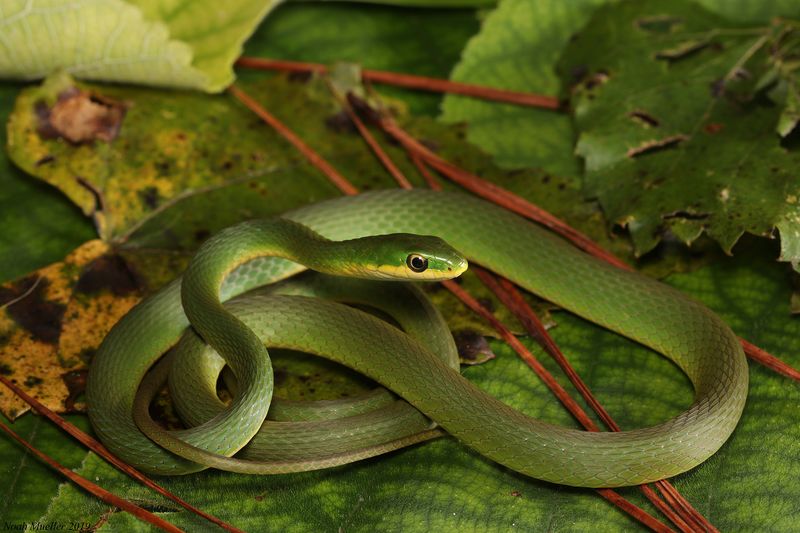
The Rough Green Snake is a slender, vine-like serpent that dwells in the lush greenery of the East Coast. Its bright green coloration allows it to camouflage perfectly among leaves and branches.
These non-venomous snakes are insectivores, feeding primarily on spiders and insects, making them beneficial for pest control. Their gentle nature and arboreal lifestyle endear them to many as harmless garden visitors.
Ensuring the survival of Rough Green Snakes involves protecting their habitats from pesticide use and deforestation.
Timber Rattlesnake
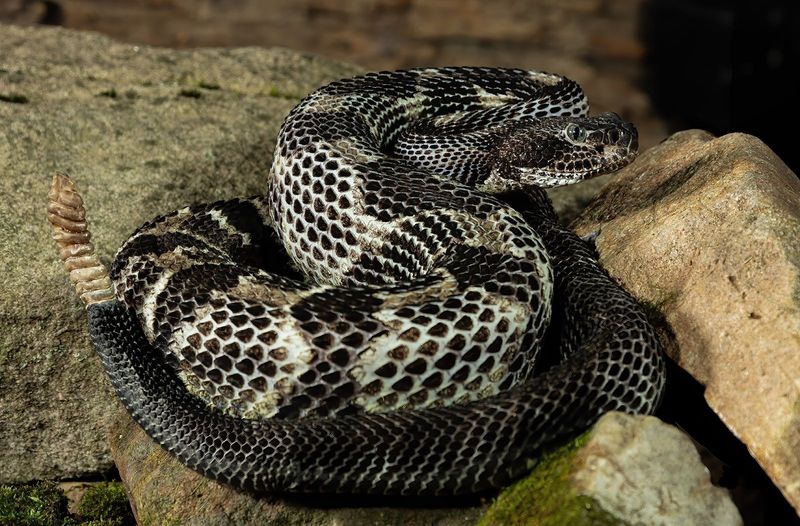
The Timber Rattlesnake, with its characteristic rattle and patterned scales, is a master of camouflage in rocky Appalachian habitats. Found across the Eastern forests, they primarily prey on small mammals and birds.
These snakes are equipped with potent venom used for hunting rather than aggression. Despite their fearsome reputation, they prefer to avoid humans and will only bite if threatened.
Conservation efforts aim to protect their habitats from fragmentation, ensuring these rattlesnakes continue to play their role in the ecosystem.
Eastern Ribbon Snake
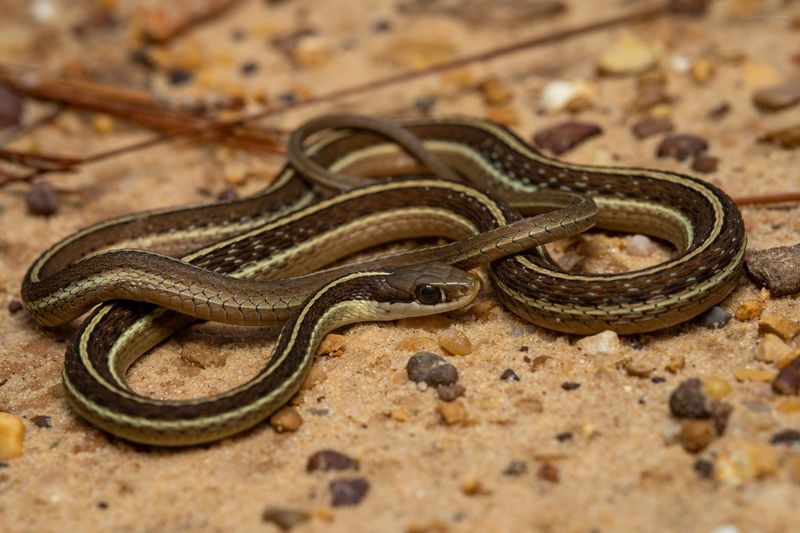
Eastern Ribbon Snakes are slender and agile, characterized by their long bodies and vivid stripes. They inhabit wetlands and marshes where they hunt for amphibians and small fish.
These non-venomous snakes are harmless to humans and beneficial to the ecosystem, contributing to the control of amphibian populations. Their speed and agility make them efficient hunters.
Protecting wetlands from pollution and encroachment is vital for the survival of Eastern Ribbon Snakes, ensuring they remain a vital component of their habitats.
Brown Water Snake
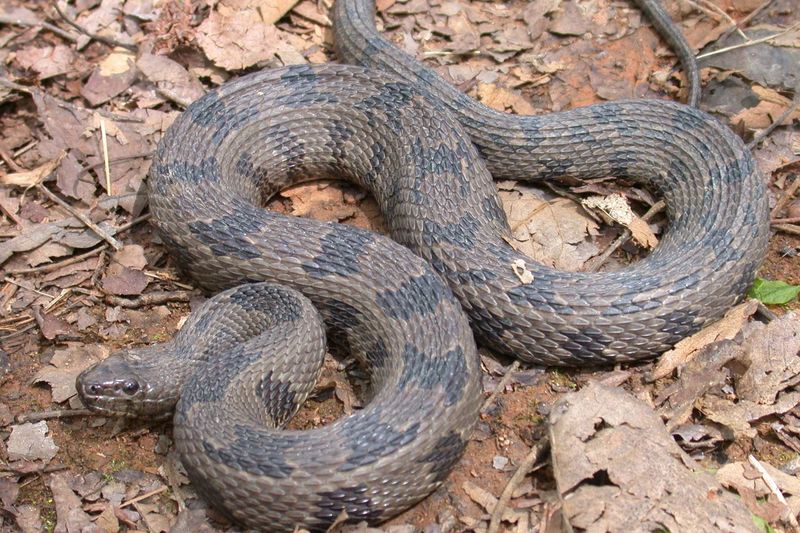
Brown Water Snakes are robust and often misunderstood snakes that thrive in riverside habitats. Their brown, mottled patterns provide excellent camouflage against riverbanks and logs.
These non-venomous snakes feed primarily on fish, using their strong bodies to capture prey in swift waters. Though often mistaken for venomous cottonmouths, Brown Water Snakes pose no threat to humans.
Protecting their aquatic environments from pollution is essential for their continued survival, highlighting the importance of clean waterways for all species.
Corn Snake
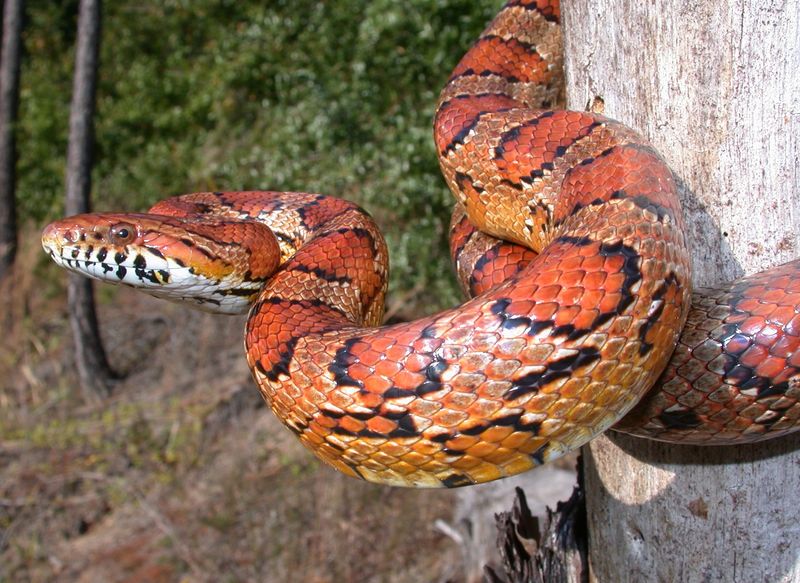
The Corn Snake is a popular and non-venomous species found along the East Coast, known for its striking orange and brown patterns. These snakes are often seen in fields and forests, where they hunt for rodents.
Corn Snakes are excellent climbers and can often be found scaling trees in search of birds and eggs. Their docile nature makes them a favorite among snake enthusiasts.
Conservation efforts focus on preserving their habitats and educating the public about their benefits, ensuring these beautiful snakes continue to thrive.
Smooth Earth Snake
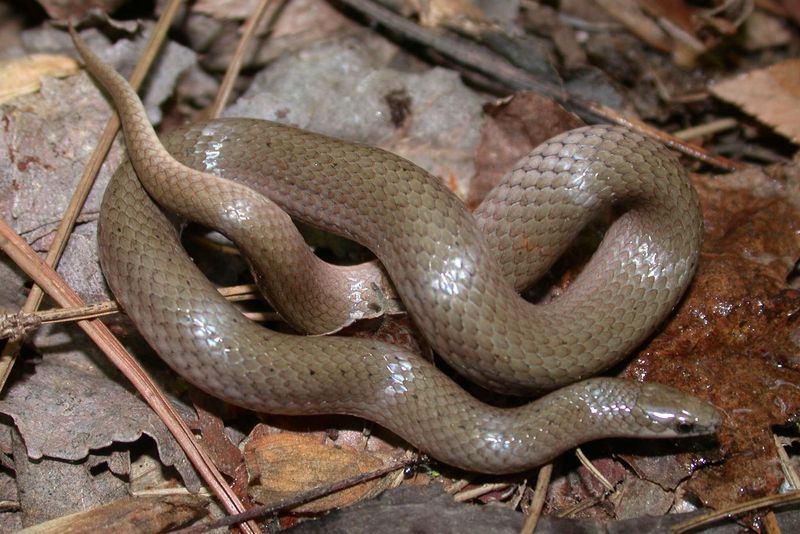
The Smooth Earth Snake is a small, elusive serpent that dwells under leaf litter and loose soil in deciduous forests. Its smooth, brown body allows it to blend seamlessly with the forest floor.
Feeding primarily on earthworms and insects, these non-venomous snakes are beneficial for soil health and pest control. Their secretive nature often keeps them hidden from view.
Ensuring the preservation of leaf litter and forest habitats is crucial for the survival of Smooth Earth Snakes, supporting their role in maintaining ecological balance.

